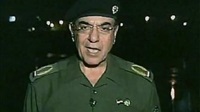Turkish-trained special forces take Somalia back to days of civil war

Protesters and the population in Mogadishu said that the special forces of the Gorgor Special Division, trained by Turkey, attacked civilians and killed demonstrators, which took Somalia back to the days of the civil war and possibly unleashing a security chaos that will benefit militant forces, especially the al-Qaeda-linked al-Shabaab extremists.
“They attacked us heavily with lots of forces.
It is a massacre,” a protester said.
He added that the Gorgor division
is taking part in the attack on the protesters.
The Gorgor forces are members of
the Somali forces that have received high-level training at the Turkish base in
Mogadishu (TURKSOM). Their number ranges between 4,500 and 5,000 supplied with
weapons and ammunition from Turkey.
They are stationed in Mogadishu,
Tosmurib and Beled Hawo, with TURKSOM as their main base.
In addition to receiving their
orders directly from President Mohamed Abdullah Farmajo, these forces are under
the command of Turkish officers at the base.
Last December, the Somali
opposition had warned Turkey of the dangers of sending arms shipments to the
special units it was training.
An eyewitness indicated that
Turkish armoured vehicles were deployed in the streets of the Somali capital.
“The military is dissolving and many troops
seemingly reverting to clan loyalties,” said Colonel Ahmed Abdullahi Sheikh,
who served for three years until 2019 as the commander of Somalia’s
U.S.-trained Danab unit.
“It’s a mess. There’s no longer any command
structure whatsoever.”
The spillover of political
rivalries into conflict will dismay Somalia’s allies and play into the hands of
the al Qaeda-linked al Shabaab insurgency, which mounts attacks on civilians
around east Africa in its bid to impose its version of Sharia law.
Hours before Friday’s
demonstration, former president Sheikh Sharif Sheikh Ahmed accused government
troops of attacking a hotel where he was staying with another ex-leader.
Security Minister Hassan Hundubey
Jimale accused the opposition of starting the fighting.
“Armed militia attacked government forces. We
repulsed and overpowered the militias,” Jimale said in a statement.
In the absence of any mediation,
the fighting is likely to spread quickly. Somalia has been torn apart by civil
war since 1991. Both the government and the opposition can count on heavily
armed supporters.
President Farmajo belongs to the
powerful Darood tribe, while most of the army units in and around Mogadishu
belong to the Hawiyyah tribe, which is closely connected to the opposition
coalition.
It was expected that members of
the Somali parliament elect a new president on February 8th. But the process
was disrupted after the opposition accused the government of placing supporters
in the general and local electoral councils.
The opposition coalition says
President Farmajo’s term is over and he is no longer president.
A coalition of opposition
candidates vowed not to recognise Farmajo as president anymore, and pledged to
organise mass demonstrations until he steps down, starting Friday.
After the incident, opposition
leaders held a press conference where they asserted that the shooting was an
attempt to assassinate their leaders and that rockets were fired.
Former Prime Minister Hassan Ali
Khairi said, “With a number of candidates, lawmakers and civilian protesters,
we survived a direct attempt to get rid of us.”
He added, “If anyone doubts the
dictatorial political ideology espoused by Farmajo, he can have an idea from
the confrontations that took place (today).”
Another leader of the opposition,
Abd al-Rahman Abd al-Shakur, said that “the missiles they fired at us hit the
airport, causing a lot of destruction.”
The United Nations mission in
Somalia expressed deep concern over the armed clashes in Mogadishu during the
night and Friday morning and called on all concerned parties to de-escalate the
situation and exercise self-restraint. It urged the belligerents to keep
communication channels open to help reduce the level of tension.
The mission emphasized the need
for the federal government and the states to reach a “political agreement”
regarding the elections.







